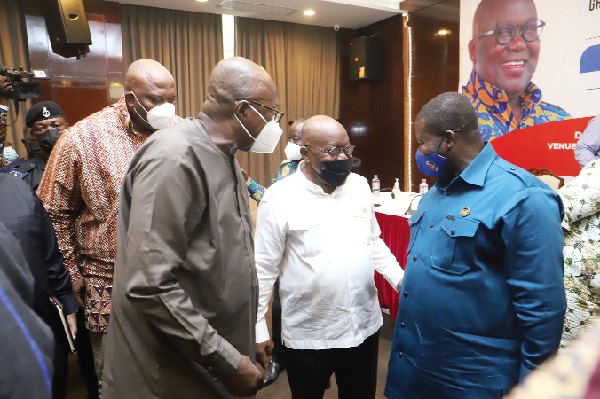
Assess integrity of public buildings - Prez charges Housing Ministry
President Nana Addo Dankwa Akufo-Addo has charged the Engineering Council of the Ministry of Works and Housing to undertake a comprehensive integrity audit of all public buildings and structures and advise the government appropriately.
That was to enable the government to prepare the country to withstand any seismic activities, particularly earthquake, he said.
Advertisement
The President said although earthquakes in themselves did not kill, the collapse of structures did, meaning that “to avoid or reduce these losses, we need to ensure that buildings and dwellings, dams and bridges are structurally competent and resilient to earthquakes of higher magnitude”.
He also urged the Ghana Geological Survey Authority to advise the government on the logistical needs and equipment required by the authority to undertake round-the-clock monitoring of seismic activities for urgent action.
Stakeholder conference
President Akufo-Addo gave the charge in Accra yesterday when he opened a stakeholder conference to study a report compiled by a committee of experts that assessed Ghana’s state of preparedness for earthquakes.
The conference is on the theme: “Building Resilience To Earthquake: A National Response”.
According to the National Disaster Management Organisation (NADMO), Ghana’s major installations, including the Jubilee House, the Korle Bu Teaching Hospital, the Akosombo Dam, ministries in Accra and Burma Camp, were on the fault lines for earthquakes.
Scheme
President Akufo-Addo noted that it was also important for the ministries of Works and Housing and Local Government, Decentralisation and Rural Development to collaborate with the Ghana Institution of Engineers to develop a scheme that would make homeowners retrofit their properties to make them resistant to earthquakes.
He noted that constructing well-engineered structures, including dams and roads, and retrofitting important lifeline buildings, such as hospitals, schools, churches and mosques, could not be compromised.
History
Tracing the history of earthquakes in Ghana and elsewhere, President Akufo-Addo touched on the devastating earthquake that hit Haiti in 2010 that resulted in the death of 250,000 people, with 300,000 injured and five million displaced.
Earthquakes trigger other devastating disasters such as fires, total waves or tsunamis and flash floods.
Ghana’s first earthquake was recorded in 1615. In 1636, an earthquake shook parts of the Western Region, burying alive a lot of people, including miners, in the Nzema area.
The President said the last destructive earthquake occurred at 7:30 p.m. on June 22, 1938, measured 6.5 on the Richter scale and took the lives of 17 people and injured 133 others.
That incident also razed many buildings in the national capital, at the time the population of Accra was 177,000.
Warning
“With the current size of Accra estimated conservatively at five million people, your guess is as good as mine with respect to the number of fatalities if a similar event were to occur today.
“Knowing what to do in the event of an earthquake is crucial to survival. It is important that all Ghanaians know what to do to remain safe and alive should such an unfortunate incident occur in the future,” the President noted.
President Akufo-Addo said he had instructed NADMO to liaise with the Ghana Education Service to incorporate themes on protection against earthquakes and other disasters at the pre-tertiary educational level.
He said he had also encouraged the organisation to embark on a sustained educational campaign for the entire nation.
Committee
The Chairperson of the Technical Committee on Earthquakes, Mrs Carlien Bou-Chedid, said some level of damage to well-designed buildings during earthquakes was acceptable by engineers.
She, however, asked: “How much damage would we be willing to accept, for example, for our homes?”
Mrs Bou-Chedid noted that if Ghanaians were ready to accept such damage, then how would they pay for the cost of repairs and wondered if insurance companies would be capable of making massive payouts and still remain viable.
She said those were some of the conversations that the country needed to have.



